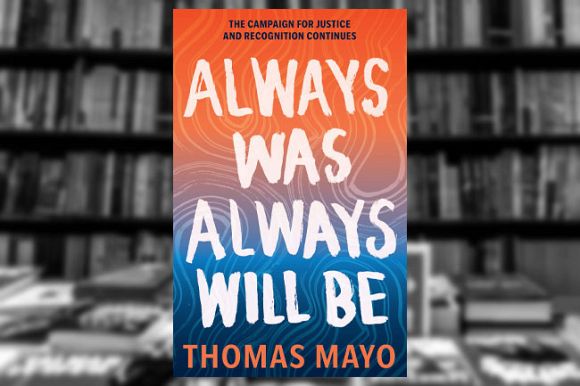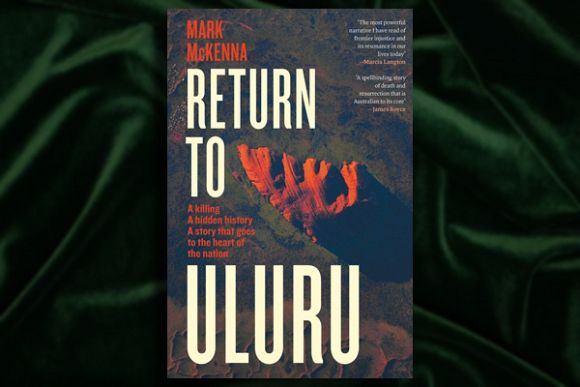A new book by acclaimed author Clare Wright examines how the people of Yirrkala changed the course of Australian democracy. Jim Kable shares his thoughts on the book.
CLARE WRIGHT’S BOOK, Näku Dhäruk: The Bark Petitions, is the third part of an award-winning trilogy examining, in broad strokes: Ballarat and Eureka — the footprints of democracy; women’s democratic participation and early suffrage; and now with his last, in 1963, the emerging consciousness of First Australians by government and bureaucrats as citizens with rights worthy of respect.
In a list of eminent Australians and others, praise for this book comes from Megan Davis, Larissa Behrendt, Thomas Mayo, Mark McKenna, Frank Bongiorno and William Dalrymple.
And from Ted Egan AO who plainly states that Clare Wright’s book:
“…is essentially sane, fair and unbiased… based on meticulous research of the actual events of the year 1963 as they unfolded in northeast Arnhem Land. This book should become standard reading material for all secondary school students; it deserves to be a powerful weapon in the desirable quest for truth-telling in Australia.”
These are sentiments which, as a former teacher of history myself, I wholeheartedly endorse.
It is a sprawling book which, including the (end) notes which must be read, too, is 600 pages in length. Yet the book almost totally deals only with the events of the year 1963.
Clare Wright (currently Professor of History and Professor of Public Engagement at La Trobe University and Chair of the National Museum of Australia Council) has had access to letters and diaries and unpublished memoirs from some of the principal players in this history as well as interviews with eyewitnesses to its unfolding, including with Galarrwuy Yunupingu who gifted to her the title to this book, Ṉäku Dhäruk — the Yolŋu name for the Bark Petitions.
Before we move on, permit me a background introduction.
In the mid-1980s, I undertook a two-year Graduate Diploma in what was then called “Aboriginal” Studies at Armidale CAE (itself shortly afterwards amalgamated into UNE). As I look back over many years of study, I think it was easily the most significant of them all.
At the first residential school, Alan Fidock from the NT gave those attending a course an introduction to the structural complexities of the Yolŋu people of north-eastern Arnhem Land. The moiety system – aspects of both Dhuwa and Yirritja linguistic differences – and a history, incorporating hundreds of years of contact and exchange with Makassan/Bugis trepangers.
Recently, I discovered that Alan Fidock was with Edgar Wells at the Milingimbi Mission – both Methodist pastors – and both engaged in the early support of bark painting by members of the community.
It was Alan who discovered that part of the decoration on the $1.00 note issued first with the introduction of decimal currency on 14 February 1966 was Milingimbi man David Daymirringu. He wrote to Dr HC Coombs who rectified what had been a casual neglect – with a significant payment and a silver medallion commemorating his work – a bark painting.
As a consequence of those studies and of having taught a number of memorable First Australians children in Hay and Deniliquin and in Inverell in NSW, I recall sending a note to a Uniting Church Missions journal arguing against what I saw as a rather patronisingly written article which I had picked up and read while visiting a relative. It provoked an unconvincing blustering response.
Some years ago in Canberra, I visited the National Parliament and admired the Bark Petitions displayed there. The full story was unknown to me, but I gained the impression that they were significant in the developing moves towards proper acknowledgement of First Peoples and towards their Land Rights.
A few years back, Ted Egan shared with me his MA thesis dealing with the Caledon Bay killings and the terrible betrayal of Dhakiyarr and his disappearance after his acquittal — clearly murder by the NT Police (or certainly by elements therein).
My wife and I travelled for our first visit in mid-2015 to the NT – brief stops in Mparntwe, Nitmiluk and Darwin – visits to Kakadu and Litchfield – but not so far as Arnhem Land. And later I was to uncover kinship connections to the Gurindji people and to a descendant of a (sole?) survivor of the 1882 Copper Mine massacres of the Woolwonga/Wulwulam people in the Burundie region – a couple of hundred km south-south-east from Darwin.
In late May last year on a first-ever visit to Uluṟu and Kata Tjuṯa, I came across Selwyn Tjalu Gaykamangu, a young fellow seated at the hotel grand piano. “Do you play?” I asked, initiating a conversation. “A little,” he replied. He then proceeded to play a beautiful light classical piece. Later that evening, I discovered he was part of the staff handing around drinks and canapés at a viewing place facing Uluṟu for a special night drone show.
We got back into conversation. He’d completed his secondary education in Melbourne. His mother’s country was the APY Lands. His father was a noted singer-songwriter from eastern Arnhem Land – from Milingimbi, in fact – singing in the Gupapuyngu language — Stanley Gawurra Gaykamangu.
And Selwyn himself is also a singer. And a Papunya Central Australia Football league player (at least he was in 2023) when arguing against the ending of government funding support for communities where playing sport and making music was of utmost importance.
Two nights ago as I write this (19 February), I caught a fascinating documentary presented by Karla Grant called Last of the Nomads. An elderly couple was brought in from the Gibson Desert (central-eastern WA towards the NT border) in 1977 where a terrible drought had dried up almost all waterholes and there was little food to be had. It tells of their back story and traces the search, as told again some 20 years later.
On that same day, my wife and I visited the Maitland Regional Art Gallery (MRAG) where we enjoyed a stunning exhibition of work by Robert Fielding, including a lengthy film showing him producing many of the pieces on display. His father is Yankunytjatjara and his mother is of Afghan/Pakistani cameleer and Western Arrente descent.
Fielding now lives in Mimili in the APY Lands of northern South Australia some 300+ km south of Mparntwe (Alice Springs) and close to Pukatja (also Ernabella) from which his father Bruce was taken – one of the Stolen Generations – as a boy. One of Robert’s sons is the singer Zaachariaha Rameth Fielding.
Music, art and sport seem to be a common theme running across all First Australian peoples. Along with official governmental interference — both politically and bureaucratically.
In 1963 in north-eastern Arnhem Land, a Methodist Mission community at Yirrkala was led by the Reverend Edgar Wells (his memoir was titled Reward and Punishment in Arnhem Land), there with his wife Ann and served by her typewriter and meticulous records keeping, after they had spent time out on Milingimbi as referenced above.
Other missionary members of the community included the school teacher Beth Graham, an observant letter-writer to her family in Victoria, and Ron Croxford (Principal of the Yirrkala School), along with his wife, Margaret, the choir leader.
Others included the agent for the proposed bauxite mine, Ben Dickinson, a representative of the worst kind of patronising regard towards the people and the sacred sites which he knowingly desecrated (it still goes on with Juukan Gorge and the Burrup Peninsula being just some recent examples) and troglodytic politicians led by Paul Hasluck assisted in various ways by his departmental officers — though balanced more proactively by others on the opposition side such as Jock Nelson, Kim Beazley and Gordon Bryant.
And others, including the patronising and deviously vindictive figure, General Secretary of the Methodist Overseas Mission Service, the “Reverend” Cecil Gribble – cosying up with Paul Hasluck and others – and eventually managing the totally unfair exit (some might see it as expulsion) of the Reverend Edgar and Ann Wells from Yirrkala at the very close of the year.
And then the players from the two moieties of these people and within each – their clans – the Yirritja (Gumatj and Mangalili) and the Dhuwa (Rirratjiŋu and Djapu), some of whom were born in the late 19th Century. And there were women – young women, too – brought into various parts of the story due to their developing and significantly important English language skills.
Land set aside for the community by the government some 50 years earlier was suddenly being desecrated by ugly pegs outlining a proposed mining venture. Absolutely no discussion with the community members, encroaching unequally across the lands of different traditional owner/clans and proposing using the freshwater (used by the community) from the lagoon for the mine and to take over important ceremonial places and sites — and no communication about any of it.
All this as the community members were being prepared for their first voting rights and learning about those rights and responsibilities which they had as citizens. In the earlier stages of the year, a beautiful bark panel created for the community church (and, later, in the 1970s, removed by a fundamentalist church leader as being sacrilegious; the Wells couple long gone) set the stage for the idea of the Bark Petitions, of which four were created after negotiation between the clans of the Dhuwa and Yirritja moieties as to who could work on them.
Clare Wright describes all of these matters with absolute attention to the names.
Clare Wright charts the year – the seasons – the aspects of which define the ceremonial life of the community, now under threat by outside forces. There is an eisteddfod entry in Darwin, creating a real stir for its brilliance. Later, a visit by a troupe down south created opportunities for supportive politicians and the press, alerting the nation as to what was going on regarding the proposed bauxite mine — things being signed by the Menzies Government while still there was no consultation with the people, but headaches for Hasluck.
As the temperature rose in the oppressive period towards the coming of the monsoon, so too was my own blood pressure — figuratively speaking at least.
I turned 14 in mid-1963, the year I completed my Intermediate Certificate. Worried about Caesar’s Wars and Latin ablative absolutes, totally unaware of the drama unfolding in the northeastern parts of the NT. Though, like many Australians of the era, we had some Namatjira prints on the wall at home. I had noted his death some years earlier when I was ten — observing the hypocrisy and ugliness of his official treatment of my mother, and then at his death everyone seemed to be desirous of praising him.
We had a set of book-ends with heads of First Australians on one of our bookshelves. But otherwise ignorant. Yet still, a stirring of some degree of social justice sentiment.
This book is a page-turner. The actors, the unfolding story and the sense of discomfort (then of rage) will surely be with all readers. I marked significant passages, descriptions and insights on almost every page, evidence of Clare Wright’s heart and deep and respectful understanding of the story she was telling. I highly recommend this book to all.
Näku Dhäruk: The Bark Petitions by Clare Wright is published by Text Publishing.
This book was reviewed by an IA Book Club member. If you would like to receive free high-quality books and have your review published on IA, subscribe to receive your complimentary IA Book Club membership.
Jim Kable is a retired teacher who has taught in rural and metropolitan NSW, in Europe, and later, long-term in Japan. He is also a member of the steering committee of The New Liberals political party.
Support independent journalism Subscribe to IA.











